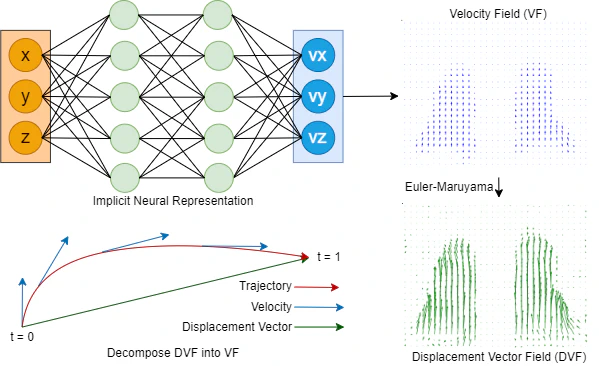Beyond Voxel-Based Methods: Continuous Motion Modeling for Enhanced Deformable Image Registration
 Image credit: Unsplash
Image credit: UnsplashAbstract
Intra-fraction motions are commonly estimated using deformable image registration (DIR). However, the conventional voxel-based methods can compromise accuracy, especially for large changes, affecting processes like dose accumulation and 4D dose optimization. Therefore, we introduce a novel way of representing the registration process, conceptualizing it as a continuous flow in both spatial and temporal realms. This innovative model effectively addresses the inherent limitations of voxel-based discretization, while offering a robust solution to challenges posed by large deformations. Most significantly, the sliding boundary problem, a challenge for classical methods like B-splines [1], can be solved effectively.
Add the publication’s full text or supplementary notes here. You can use rich formatting such as including code, math, and images.